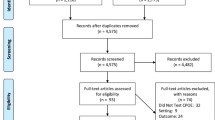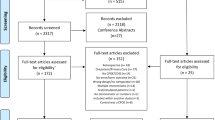ABSTRACT
BACKGROUND
It is uncertain if computerized physician order entry (CPOE) systems are effective at reducing adverse drug event (ADE) rates in community hospitals, where mainly vendor-developed applications are used.
OBJECTIVE
To evaluate the impact of vendor CPOE systems on the frequency of ADEs.
DESIGN AND PATIENTS
Prospective before-and-after study conducted from January 2005 to September 2010 at five Massachusetts community hospitals. Participants were adults admitted during the study period. A total of 2,000 charts were reviewed for orders, medication lists, laboratory reports, admission histories, notes, discharge summaries, and flow sheets.
MAIN MEASURES
The primary outcome measure was the rate of preventable ADEs. Rates of potential ADEs and overall ADEs were secondary outcomes.
KEY RESULTS
The rate of preventable ADEs decreased following implementation (10.6/100 vs. 7.0/100 admissions; p = 0.007) with a similar effect observed at each site. However, the associated decrease in preventable ADEs was balanced against an increase in potential ADEs (44.4/100 vs. 57.5/100 admissions; p < 0.001). We observed a reduction of 34.0% for preventable ADEs, but an increase of 29.5% in potential ADEs following implementation. The overall rate of ADEs increased (14.6/100 vs. 18.7/100 admissions; p = 0.03), which was driven by non-preventable events (4.0/100 vs. 11.7/100 admissions; p < 0.001).
CONCLUSIONS
Adoption of vendor CPOE systems was associated with a decrease in the preventable ADE rate by a third, although the rates of potential ADEs and overall ADEs increased. Our findings support the use of vendor CPOE systems as a means to reduce drug-related injury and harm. The potential ADE rate could be reduced by making refinements to the vendor applications and their associated decision support.
Similar content being viewed by others
References
Bates DW, Cullen DJ, Laird N, et al. Incidence of adverse drug events and potential adverse drug events. Implications for prevention. ADE Prevention Study Group. JAMA. 1995;274:29–34.
Ball MJ, Garets DE, Handler TJ. Leveraging information technology towards enhancing patient care and a culture of safety in the US. Methods Inf Med. 2003;42:503–8.
Milstein A, Galvin RS, Delbanco SF, Salber P, Buck CR Jr. Improving the safety of health care: the leapfrog initiative. Eff Clin Pract. 2000;3:313–6.
Bobb A, Gleason K, Husch M, Feinglass J, Yarnold PR, Noskin GA. The epidemiology of prescribing errors: the potential impact of computerized prescriber order entry. Arch Intern Med. 2004;164:785–92.
Eslami S, de Keizer NF, Abu-Hanna A. The impact of computerized physician medication order entry in hospitalized patients–a systematic review. Int J Med Inform. 2008;77:365–76.
Wolfstadt JI, Gurwitz JH, Field TS, et al. The effect of computerized physician order entry with clinical decision support on the rates of adverse drug events: a systematic review. J Gen Intern Med. 2008;23:451–8.
Kohn LT, Corrigan J, Donaldson MS. Institute of Medicine. Committee on Quality of Health Care in A. To err is human: building a safer health system. Washington, DC: National Academy Press; 2000.
The Leapfrog Group. Fact Sheet: Computerized Physician Order Entry., 2011. (Accessed December 31, 2011, at http://www.leapfroggroup.org/media/file/FactSheet_CPOE.pdf)
CPOE still a priority, but… Adoption rates vary according to who’s asking. Mod Healthc 2008;38:S5.
Ford EW, McAlearney AS, Phillips MT, Menachemi N, Rudolph B. Predicting computerized physician order entry system adoption in US hospitals: can the federal mandate be met? Int J Med Inform. 2008;77:539–45.
Yu FB, Menachemi N, Berner ES, Allison JJ, Weissman NW, Houston TK. Full implementation of computerized physician order entry and medication-related quality outcomes: a study of 3364 hospitals. Am J Med Qual. 2009;24:278–86.
Jha AK, DesRoches CM, Campbell EG, et al. Use of electronic health records in US hospitals. N Engl J Med. 2009;360:1628–38.
Kremsdorf R. CPOE: not the first step toward patient safety. Health Manag Technol. 2005;26(66):5.
Hug BL, Witkowski DJ, Sox CM, et al. Adverse drug event rates in six community hospitals and the potential impact of computerized physician order entry for prevention. J Gen Intern Med. 2010;25:31–8.
Morimoto T, Gandhi TK, Seger AC, Hsieh TC, Bates DW. Adverse drug events and medication errors: detection and classification methods. Qual Saf Health Care. 2004;13:306–14.
Bates DW, Boyle DL. Vander Vliet MB, Schneider J, Leape L. Relationship between medication errors and adverse drug events. J Gen Intern Med. 1995;10:199–205.
Rozich JD, Haraden CR, Resar RK. Adverse drug event trigger tool: a practical methodology for measuring medication related harm. Qual Saf Health Care. 2003;12:194–200.
Institute for Healthcare Improvement: IHI Trigger Tool for Measuring Adverse Drug Events., 2011. (Accessed December 31, 2011, at http://www.ihi.org/knowledge/Pages/Tools/TriggerToolforMeasuringAdverseDrugEvents.aspx)
Bates DW, Leape LL, Cullen DJ, et al. Effect of computerized physician order entry and a team intervention on prevention of serious medication errors. JAMA. 1998;280:1311–6.
Hug BL, Witkowski DJ, Sox CM, et al. Occurrence of adverse, often preventable, events in community hospitals involving nephrotoxic drugs or those excreted by the kidney. Kidney Int. 2009;76:1192–8.
Ammenwerth E, Schnell-Inderst P, Machan C, Siebert U. The effect of electronic prescribing on medication errors and adverse drug events: a systematic review. J Am Med Inform Assoc. 2008;15:585–600.
Bates DW. CPOE and clinical decision support in hospitals: getting the benefits. Arch Intern Med. 2010;170:1583–4.
Bates DW, Teich JM, Lee J, et al. The impact of computerized physician order entry on medication error prevention. J Am Med Inform Assoc. 1999;6:313–21.
Evans RS, Pestotnik SL, Classen DC, Horn SD, Bass SB, Burke JP. Preventing adverse drug events in hospitalized patients. Ann Pharmacother. 1994;28:523–7.
Steele AW, Eisert S, Witter J, et al. The effect of automated alerts on provider ordering behavior in an outpatient setting. PLoS Med. 2005;2:e255.
Colpaert K, Claus B, Somers A, Vandewoude K, Robays H, Decruyenaere J. Impact of computerized physician order entry on medication prescription errors in the intensive care unit: a controlled cross-sectional trial. Crit Care. 2006;10:R21.
Upperman JS, Staley P, Friend K, et al. The impact of hospitalwide computerized physician order entry on medical errors in a pediatric hospital. J Pediatr Surg. 2005;40:57–9.
Koppel R, Metlay JP, Cohen A, et al. Role of computerized physician order entry systems in facilitating medication errors. JAMA. 2005;293:1197–203.
Metzger J, Welebob E, Bates DW, Lipsitz S, Classen DC. Mixed results in the safety performance of computerized physician order entry. Health Aff (Millwood). 2010;29:655–63.
Acknowledgements
The Rx Foundation and Commonwealth Fund supported the study. They commented on its design, but were not involved in data collection, data management, analysis, interpretation, or writing of the manuscript. We thank Kathy Zigmont, RN, and Cathy Foskett, RN, for the chart review and data collection at the participating study sites.
Conflict of Interests and Disclosures
Dr. Bates is a coinventor on patent no. 6029138 held by Brigham and Women’s Hospital on the use of decision support software for medical management, licensed to the Medicalis Corporation. He holds a minority equity position in the privately held company Medicalis, which develops web-based decision support for radiology test ordering, and has served as a consultant to Medicalis. He serves on the board for SEA Medical Systems, which makes intravenous pump technology. He serves as an advisor to Calgary Scientific, which makes technologies that enable mobility within electronic health records. He is on the clinical advisory board for Zynx, Inc., which develops evidence-based algorithms, and Patient Safety Systems, which provides a set of approaches to help hospitals improve safety. He consults for Hearst, which develops knowledge resources. He previously served on the board of Care Management International, which is involved in chronic disease management. Dr. Leung is supported by a Clinical Fellowship Award from Alberta Innovates Health Solutions and by a Fellowship Award from the Canadian Institutes for Health Research. He also receives support from the John A. Buchanan Research Chair in General Internal Medicine.
Author information
Authors and Affiliations
Corresponding author
ELECTRONIC SUPPLEMENTARY MATERIAL
Below is the link to the electronic supplementary material.
ESM 1
(DOC 98 kb)
Rights and permissions
About this article
Cite this article
Leung, A.A., Keohane, C., Amato, M. et al. Impact of Vendor Computerized Physician Order Entry in Community Hospitals. J GEN INTERN MED 27, 801–807 (2012). https://doi.org/10.1007/s11606-012-1987-7
Received:
Revised:
Accepted:
Published:
Issue Date:
DOI: https://doi.org/10.1007/s11606-012-1987-7




